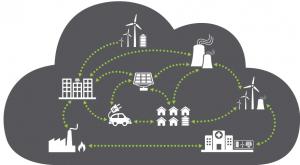Building Competitive Advantage for Grid of the Future
Mackinnon Lawrence is a senior research director leading Navigant Research’s Energy Technologies and Utility Transformations programs. With more than a decade of experience as an analyst and attorney serving the international energy sector, he has played a lead role in guiding the Energy practice’s worldwide research agenda. Mackinnon’s work has focused on the Energy Cloud and emerging technologies that are transforming the power grid.
Jan Vrins is a managing director and Navigant’s Global Energy practice leader. He advises utility executives on developing strategies for ensuring long-term operational and financial success in a rapidly changing landscape. Jan developed the Utility of the Future Framework to help clients understand how the trends in the market and evolving business models can improve their commercial and operational performance. His utilities industry experience includes investor and government owned utilities in North America, Europe and Latin America.
The pace and impact of change in the energy industry are unrelenting. As echoed in Klaus Schwab's recent book, "The Fourth Industrial Revolution," the speed of current global breakthroughs across the physical, digital, and biological spheres has no historical precedent.

This revolution is unique in its velocity, scope, and complexity. Leveraging the pervasive power of technology and digitalization, innovations are evolving at an exponential pace.
Nearly every industry will be impacted. The energy industry is no exception. Already, the prolific rise of renewables and distributed energy resources, behind-the-meter smart devices, digital infrastructure, advanced controls and analytics, and changing customer demands are ushering in a new era of highly networked power.
The end result will be a whole-scale transformation in the way energy is produced and consumed. Moving away from one-way grid architecture powered solely by large centralized generation assets like fossil fuel, hydro, or nuclear power plants, toward a platform of two-way power flow and intelligent grid architecture. We call this the Energy Cloud.
Peer into a fully realized Energy Cloud. One can imagine an autonomous, self-healing grid leveraging the full capabilities of artificial intelligence and cyber-physical systems such as the Internet of Things, self-driving electric vehicles, and smart grid.

